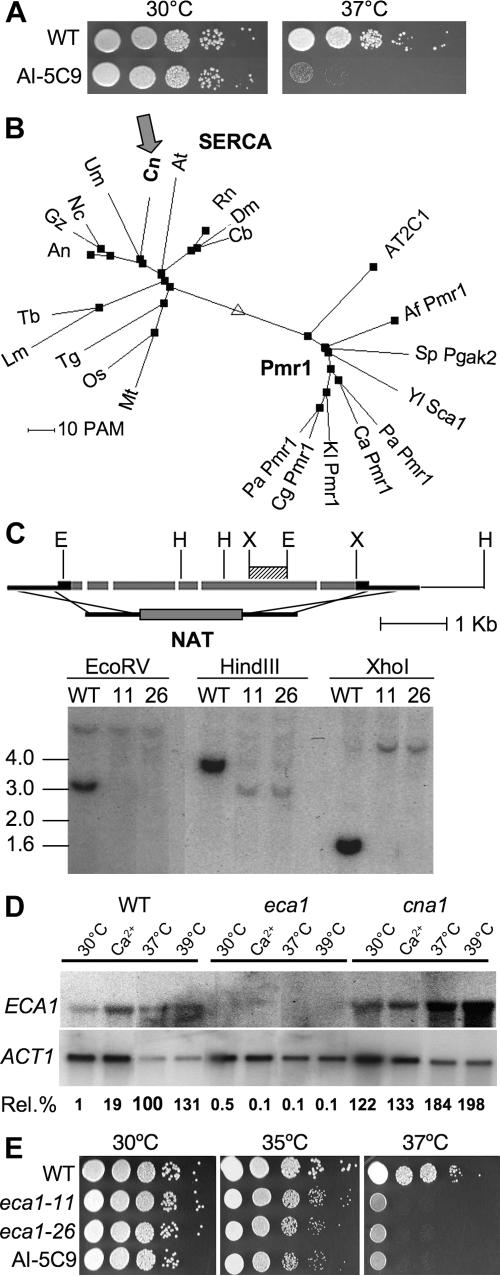FIG. 2.
Characterization of C. neoformans Eca1. (A). Temperature-sensitive growth of eca1 insertion mutant AI-5C9. Ten-fold dilutions of AI-5C9 and the wild-type (WT) H99 cells were plated on YPD agar and cultured at 25°C or 37°C for 2 days. (B) Phylogenetic analysis of Eca1 and its homologs. Amino acid sequences of C. neoformans Eca1 (Cn) and P-type Ca2+ pumps from other organisms were aligned using the MultAlin program (17). A phylogenetic tree was deduced to depict the evolutionary relationships of the homologs. All of the SERCA-type pumps cluster at the left node (labeled SERCA), and the fungal Pmr1 or mammalian AT2C1 pumps cluster at the right node (labeled Pmr1). (C). Schematic diagram of the targeted deletion of the ECA1 gene. The genomic DNA structure of ECA1 is illustrated as gray boxes for the exons, and the entire coding region was replaced with a nourseothricin resistance cassette (NAT). Shown are the results of Southern analysis of genomic DNA from two independent isolates, the eca1-11 (lanes 11) and eca1-26 (lanes 26) mutants, and parental strain H99 (WT). Genomic DNA was digested with EcoRV, HindIII, or XhoI. The probe used is indicated by the hatched bar. (D) Northern blot analysis of ECA1 expression. Total RNAs were isolated from wild-type, eca1, and cna1 cells cultured at 30°C in YPD medium (30°C) or YPD medium supplemented with 20 mM of CaCl2 (Ca20) and cells cultured in YPD medium at 37°C (37°C), and the Northern blot was hybridized with 32P-labeled probes for actin (ACT1) and ECA1. The autoradiography images were analyzed with NIH Image software to quantify the expression levels. Transcription of ECA1 in each sample was normalized by the ACT1 gene and compared with the 37°C-treated wild-type sample, the value of which was set to 100%. The relative levels of ECA1 expression are listed below the images (Rel. %). (E). Deletion of ECA1 resulted in temperature-sensitive phenotypes identical to that of AI-5C9. Ten-fold serial dilutions of eca1-11, eca1-26, and wild-type strains were plated on YPD agar and cultured at 30°C, 35°C, or 37°C for 2 days.

